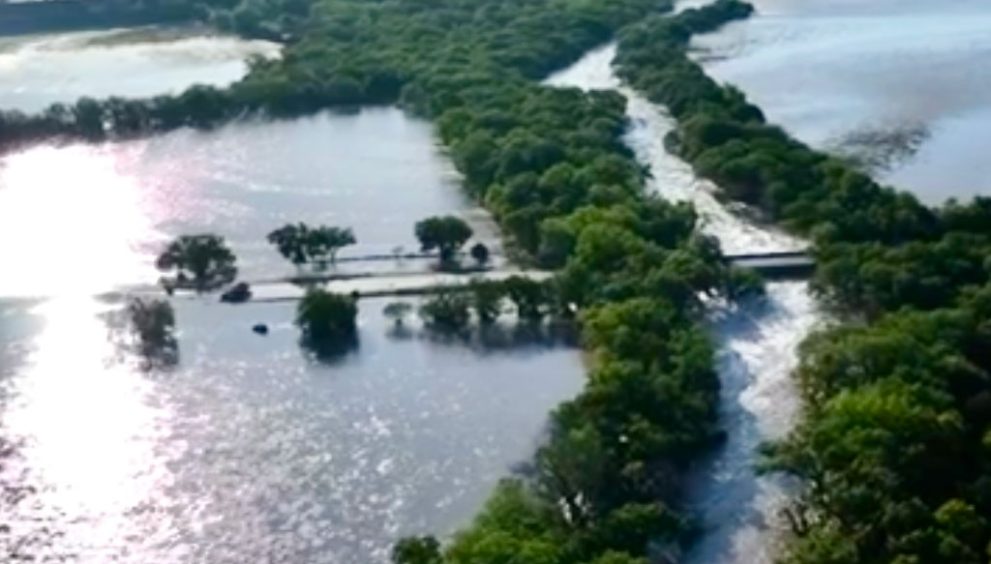Lampasas River Floods 2025: Impact, Precautions, and Resilience

Introduction: A River’s Wrath Unleashed
In the heart of Central Texas, the Lampasas River, typically a serene waterway winding through rugged hill country, transformed into a raging force of nature on July 13, 2025. Surging to a staggering 33 feet in just four hours, the river unleashed devastating floods that left communities reeling. This catastrophic event, following closely on the heels of deadly floods on July 4, has gripped the attention of residents and authorities alike, highlighting the raw power of nature and the resilience of those affected. In this article, we explore the profound effects of the Lampasas River floods on local communities, the precautions residents can take, and the inspiring stories of survival and recovery, optimized for readers seeking the latest updates on this unfolding disaster.
The Devastating Impact on Central Texas Communities
The Lampasas River’s rapid rise near Kempner, Texas, triggered widespread destruction, submerging homes, businesses, and cherished community landmarks. The river, normally a modest 10 feet deep, reached major flood stage at 33 feet, just shy of the 34-foot threshold for catastrophic flooding. This sudden surge led to the evacuation of multiple RV parks, the closure of critical roads like Highway 190, and the destruction of local infrastructure, including a beloved Boy Scout ferry system at Hancock Park.
Human Toll and Emotional Scars
The floods displaced dozens of residents, with emergency teams rescuing people and pets from rising waters. In Lampasas, local teenager Jeremiah Ortie witnessed the destruction of a hand-pulled ferry system he and his fellow Boy Scouts used just days before. “It’s completely gone,” he said, staring at the wreckage of a dock swept away by the torrent. Longtime resident Cole Heivlin described Hancock Park as “completely a disaster,” with debris scattered across what was once a vibrant fishing and recreation spot. The emotional weight of loss was palpable, as families returned to homes—if they still stood—only to find memories washed away.
The broader Central Texas region, still recovering from the July 4 Guadalupe River floods that claimed over 100 lives, faced renewed grief. In Kempner, the Lampasas Police and Fire Departments evacuated elderly residents from apartments near Sulphur Creek, a tributary of the Lampasas River, while Texas Game Wardens conducted swift water rescues. Governor Greg Abbott emphasized the state’s focus on saving lives, deploying Texas Task Force One to assist in Lampasas and surrounding counties.
Economic and Environmental Fallout
Local businesses, like the Thirsty Penguin in Lampasas, were hit hard. Owner Brent Cloyd reported that floodwaters swept through one of his locations, sending equipment half a mile downriver. The economic ripple effect is significant, with businesses facing costly repairs and disrupted operations. Environmentally, the floods left parks and waterways choked with debris, threatening aquatic ecosystems. The Lampasas River, known for supporting diverse species like fish and freshwater mussels, now faces challenges from sediment and pollution carried by floodwaters.
Precautions to Stay Safe During Floods
The Lampasas River floods underscore the importance of preparedness in flood-prone areas. Here are key precautions to protect yourself and your loved ones:
- Stay Informed: Monitor weather updates from the National Weather Service (NWS) and local authorities. The NWS issued flash flood warnings for Lampasas County, urging residents to avoid low-lying areas. Apps like the FEMA app or NOAA Weather Radio can provide real-time alerts.
- Avoid Flooded Areas: Never drive through flooded roads or low-water crossings. The NWS warns that just 12 inches of moving water can sweep away a vehicle. “Turn around, don’t drown” is a critical mantra for flood safety.
- Evacuate Early: If you live in flood zones A or B, move to higher ground immediately. The Lampasas Fire Department set up a shelter at 1107 E. 4th Street during the crisis, a model for community response.
- Prepare an Emergency Kit: Stock essentials like water, non-perishable food, flashlights, batteries, and first-aid supplies. Include important documents in waterproof containers.
- Secure Property: Elevate appliances, secure heavy objects, and clear drainage systems to reduce flood damage. Businesses like the Thirsty Penguin could have mitigated losses with flood barriers or elevated storage.
- Stay Connected: Inform family or friends of your plans and location during a flood event. Community support networks, as seen in Lampasas, are vital for coordinating relief efforts.
Stories of Resilience and Community Spirit
Amid the chaos, stories of courage and solidarity emerged. In Kempner, volunteer firefighters worked tirelessly to evacuate RV parks, ensuring no fatalities were reported despite the river’s rapid rise. In Lampasas, residents like Greyson Chapa and Ace Brown, who frequented Hancock Park, expressed shock but also determination to rebuild. Community-organized support networks provided shelters and resources, while Governor Abbott’s deployment of state resources underscored Texas’ commitment to recovery.
The floods also sparked discussions about long-term solutions. Federal disaster declarations have unlocked resources for affected counties, and state leaders are exploring enhanced flood warning systems, including sirens along vulnerable waterways like the Lampasas River. These efforts aim to bolster preparedness as climate change intensifies extreme weather events.
Conclusion: A Call to Action for Flood Preparedness
The Lampasas River floods of July 2025 serve as a stark reminder of nature’s unpredictability and the importance of community resilience. From the destruction of cherished landmarks to the displacement of families, the impact is profound, yet the spirit of Central Texas shines through in acts of bravery and unity. By staying informed, taking precautions, and supporting recovery efforts, residents can mitigate future risks and rebuild stronger.













